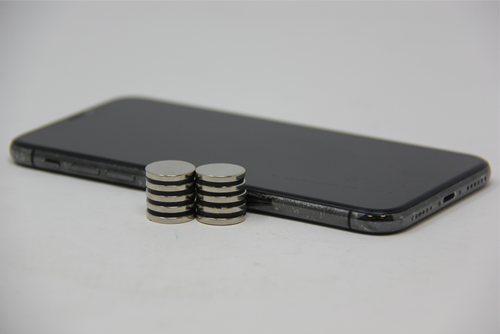In the ever-evolving landscape of smartphone technology, one component often overlooked but crucial for its functionality is the magnet. These tiny, often unnoticed components play a significant role in various aspects of our daily interactions with our phones. From enabling features like compasses and magnetic sensors to facilitating wireless charging and mounting systems, phone magnets have become indispensable.
This comprehensive guide aims to delve deep into the realm of phone magnets, exploring their functionality, applications, and impact on modern smartphone technology. Through a series of detailed sections, we will uncover the science behind phone magnets, their diverse uses, potential risks, and future prospects.
Understanding Phone Magnets
To comprehend the role of magnets in smartphones, it’s essential to grasp the fundamental principles governing magnetism. At their core, magnets possess two poles: north and south. These poles exhibit attractive forces towards their opposite poles and repulsive forces towards similar poles.
In smartphones, magnets are typically made from ferromagnetic materials like iron, nickel, or cobalt. These materials possess the unique property of aligning their magnetic domains, resulting in a magnetic field. Through careful manipulation and arrangement of these materials, manufacturers create magnets of various shapes and strengths to suit specific applications.
The Role of Magnets in Smartphone Functionality
Compass Calibration: One of the most common applications of magnets in smartphones is in compass calibration. By interacting with the Earth’s magnetic field, the magnetometer (or compass sensor) in a phone can determine the device’s orientation relative to magnetic north. This functionality is integral for navigation and map applications.
Magnetic Sensors: Many smartphones incorporate magnetic sensors for various purposes, such as detecting the presence of magnetic covers or accessories. These sensors help in automating tasks like turning the screen on/off when a cover is closed/opened.
Wireless Charging: Magnets play a crucial role in wireless charging technologies like MagSafe introduced by Apple. These magnets align the phone precisely with the charging pad, ensuring efficient power transfer. Moreover, they help secure the phone in place during charging, preventing accidental misalignment.
Mounting Systems: Phone magnets have revolutionized the way we mount smartphones in vehicles, on walls, or other surfaces. Magnetic mounts utilize strong magnets to securely hold the device in place, providing a convenient and hands-free experience for users.
Exploring Different Types of Phone Magnets
Permanent Magnets: These magnets retain their magnetism once magnetized and are commonly used in smartphones for various applications like compass calibration and magnetic sensor operation.
Electromagnets: Unlike permanent magnets, electromagnets generate a magnetic field when an electric current passes through them. While less common in smartphones due to power consumption concerns, they find applications in components like speakers and haptic feedback motors.
Neodymium Magnets: Known for their exceptional strength relative to their size, neodymium magnets are increasingly utilized in smartphone accessories like magnetic mounts and attachment systems. Their high magnetic field allows for secure mounting without adding significant bulk.
Benefits and Drawbacks of Phone Magnets
Benefits
Convenience: Phone magnets enhance user convenience by facilitating tasks like wireless charging and hands-free mounting.
Precision: Magnets enable precise alignment in wireless charging systems and mounting accessories, optimizing user experience.
Reliability: Well-designed magnetic systems offer robust attachment mechanisms, ensuring the safety and security of smartphones in various scenarios.
Drawbacks
Interference: Strong magnetic fields can interfere with the operation of sensitive electronic components within the smartphone, potentially causing malfunctions.
Degradation: Over time, repeated exposure to magnetic fields may degrade the performance of certain components, although modern smartphones are designed to mitigate this risk.
Compatibility: Not all smartphones are equipped with magnets or compatible with magnetic accessories, limiting the universality of magnetic solutions.
Safety Considerations and Risks
While phone magnets offer numerous benefits, it’s essential to consider potential safety risks associated with their usage:
Interference with Medical Devices: Strong magnets in smartphones can interfere with the operation of medical devices like pacemakers and defibrillators. Users with such medical implants should exercise caution and consult with healthcare professionals regarding safe smartphone usage.
Data Loss: Magnetic fields have the potential to corrupt data stored on magnetic storage devices like hard drives or magnetic stripe cards. Users should avoid placing smartphones near such devices to prevent data loss or corruption.
Screen Damage: Improper alignment of magnetic accessories or mounting systems may exert undue pressure on the smartphone screen, leading to scratches or cracks over time. Using certified accessories and following manufacturer guidelines can minimize this risk.
Future Trends and Innovations
The landscape of smartphone technology is ever-evolving, and the role of magnets is likely to evolve alongside it. Some potential trends and innovations include:
Improved Integration: Manufacturers may further integrate magnets into smartphone designs, enhancing functionality while minimizing potential drawbacks like interference and degradation.
Enhanced Magnetic Accessories: Innovations in magnetic accessories such as mounts and charging docks may lead to more versatile and user-friendly solutions, catering to diverse user needs and preferences.
Smart Magnetic Systems: Advancements in sensor technology and artificial intelligence could enable smartphones to adapt their magnetic behavior dynamically, optimizing performance while minimizing risks and maximizing user experience.
Conclusion
Phone magnets represent a fascinating yet often overlooked aspect of smartphone technology. From enabling essential functionalities like compass calibration and magnetic sensors to revolutionizing wireless charging and mounting systems, magnets play a crucial role in enhancing user experience and convenience. However, it’s essential to consider potential risks associated with their usage and adopt safe practices to mitigate them. As technology continues to evolve, the role of magnets in smartphones is likely to expand, driving innovation and shaping the future of mobile devices. By understanding the science behind phone magnets and their diverse applications, users can harness their full potential while navigating potential risks responsibly.







